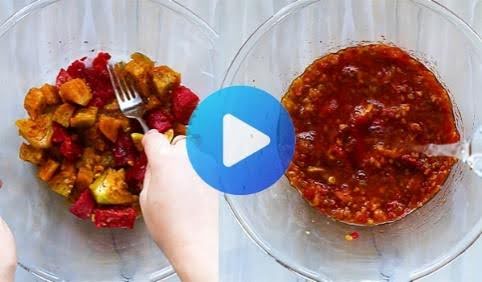Starting a weight loss journey can feel like a big mountain to climb. There are so many diets, exercises, and tips out there. It can be hard to know where to begin. One simple step I often suggest to my clients, especially women just starting out, is adding green smoothies to their routine. They are easy to make, packed with good stuff, and can really help you reach your goals when done right.
Think of a green smoothie as a blended drink made mostly from leafy green vegetables, fruits, and a liquid base. They are a fantastic way to get lots of vitamins, minerals, and fiber into your day without having to eat a huge salad. For beginners, they offer a gentle way to boost nutrient intake, which is super important when you are changing your eating habits for weight loss.
Why Green Smoothies for Weight Loss
So, how exactly does sipping on blended greens help you lose weight? It is not magic, but there is some simple science behind it.
Packed with Nutrients, Low in Calories
Leafy greens like spinach, kale, and romaine lettuce are nutritional powerhouses. They are full of vitamins A, C, K, and minerals like iron and calcium. These are things our bodies need to work well, especially when we are asking them to burn fat and build muscle. The great thing is, these greens have very few calories. You can pack a lot of them into a smoothie without adding much to your daily calorie count. This means you get lots of goodness without the extra energy that can lead to weight gain.
Fruits add natural sweetness and more vitamins. Berries, apples, and bananas are popular choices. While fruits do have natural sugars and calories, using them in moderation in your smoothie adds flavor and nutrients without overdoing it. The key is balance.
High in Fiber
Fiber is your friend when it comes to weight loss. It does a few important things. First, it helps you feel full. When you drink a fiber-rich green smoothie, it takes up space in your stomach and signals to your brain that you are satisfied. This can help you eat less overall during the day and resist unhealthy cravings.
Second, fiber helps keep your digestion running smoothly. A healthy digestive system is important for nutrient absorption and getting rid of waste. Fiber helps move things along, preventing bloating and constipation, which can sometimes make you feel heavier.
Third, fiber can help manage blood sugar levels. When you eat or drink things high in sugar without much fiber, your blood sugar can spike and then crash, leaving you feeling tired and hungry again soon. The fiber in green smoothies slows down the absorption of sugar from the fruits, giving you more steady energy.
Hydration Helper
Staying hydrated is crucial for weight loss. Water helps your metabolism work efficiently, carries nutrients to your cells, and helps flush out waste products. Many people do not drink enough water throughout the day. Green smoothies have a liquid base, usually water, coconut water, or unsweetened plant milk. This contributes to your daily fluid intake, helping you stay hydrated.
Convenient and Quick
Let’s be honest, life gets busy. Finding time to prepare healthy meals can be a challenge. Green smoothies are super quick to make. Just toss your ingredients into a blender, blend for a minute, and you have a nutritious meal or snack ready to go. This convenience makes it easier to stick to your healthy eating plan, even on hectic days. You can even prepare smoothie packs ahead of time by portioning out your greens and fruits into bags and freezing them. Then, just grab a pack, add liquid, and blend.
Building Your Perfect Green Smoothie
Making a green smoothie is simple, but knowing how to combine ingredients can make the difference between a delicious drink and something you have to force down. Here is a basic formula I recommend:
Step 1: Choose Your Greens (1-2 Large Handfuls)
This is the foundation of your green smoothie. For beginners, I suggest starting with mild-flavored greens.
- Spinach: This is my top recommendation for newbies. It has a very mild taste that gets easily hidden by fruit. Plus, it is packed with iron, which is especially important for women.
- Romaine Lettuce: Another mild option, romaine adds water content and nutrients without a strong flavor.
- Butter Lettuce: Soft and slightly sweet, this is also easy to blend in.
Once you get used to the taste, you can try greens with stronger flavors:
- Kale: A nutritional superstar, but it has a more distinct, slightly bitter taste. Start with a small amount and pair it with sweeter fruits. Lacinato (dinosaur) kale is often milder than curly kale.
- Swiss Chard: Earthy flavor, similar to beets. The colorful stems add extra nutrients.
- Collard Greens: Stronger flavor, very sturdy leaves. Best used in smaller quantities initially.
- Arugula: Peppery taste. Adds a nice kick if you like that.
- Parsley/Cilantro: These herbs add fresh flavor and lots of vitamins. Use them as additions rather than the main green.
Step 2: Pick Your Fruits (1/2 to 1 Cup)
Fruit adds sweetness, flavor, and more nutrients. It also helps mask the taste of the greens. Aim for a good balance – not too much fruit, as the sugar can add up.
- Bananas: Create a creamy texture and add sweetness. Use half a banana, especially if it is ripe. Frozen bananas make smoothies extra thick and cold.
- Berries (Strawberries, Blueberries, Raspberries, Blackberries): Lower in sugar than many other fruits and packed with antioxidants. Frozen berries work great.
- Mango/Pineapple: Tropical fruits add lots of sweetness and flavor. Use in moderation due to higher sugar content. Frozen chunks work well.
- Apples/Pears: Provide fiber and mild sweetness. Make sure to core them. You can leave the skin on for extra fiber.
- Peaches/Nectarines: Sweet and juicy when in season. Remove the pit.
- Avocado: Technically a fruit. Adds amazing creaminess and healthy fats, which help keep you full. Use about 1/4 of an avocado. It does not add much sweetness.
Tip for Weight Loss: Stick mostly to lower-sugar fruits like berries, apples, pears, and use higher-sugar fruits like bananas, mangoes, and pineapples more sparingly or in smaller amounts. Using frozen fruit helps make the smoothie cold and thick without needing ice, which can water down the flavor.
Step 3: Add Your Liquid (1 to 1.5 Cups)
You need liquid to help everything blend smoothly. The amount depends on how thick you like your smoothies.
- Water: Calorie-free, simple, and lets the flavors of the greens and fruits shine through.
- Unsweetened Almond Milk: Low in calories, creamy texture. Choose unsweetened varieties to avoid added sugars.
- Unsweetened Soy Milk: Higher in protein than almond milk, good for making the smoothie more filling. Again, stick to unsweetened.
- Unsweetened Cashew Milk: Very creamy, low in calories.
- Coconut Water: Hydrating, adds electrolytes and a subtle tropical flavor. Check labels for added sugar.
- Green Tea (Chilled): Adds antioxidants and a different flavor profile. Make sure it is cooled down before adding.
Avoid: Fruit juices (too much sugar), sweetened plant milks, dairy milk (can sometimes cause digestive issues for some when combined with lots of fruit, though unsweetened plain yogurt can be okay).
Step 4: Boost It Up (Optional Add-ins)
This is where you can customize your smoothie further and add extra benefits. Choose one or two boosters.
- Protein Powder (1 Scoop): Helps make your smoothie a more complete meal and keeps you full longer. Choose whey, casein, soy, pea, rice, or hemp protein. Look for brands with minimal added sugar or artificial ingredients. This is great if you are using the smoothie as a post-workout recovery drink.
- Greek Yogurt (1/4 to 1/2 Cup): Adds protein and creaminess. Choose plain, unsweetened varieties.
- Chia Seeds (1 Tablespoon): Tiny seeds that pack a punch of fiber, protein, and omega-3 fatty acids. They absorb liquid and help thicken the smoothie.
- Flax Seeds (1 Tablespoon, Ground): Another great source of fiber and omega-3s. Use ground flaxseed, as whole seeds can pass through your system undigested.
- Hemp Seeds/Hearts (1 Tablespoon): Good source of protein and healthy fats. Mild, nutty flavor.
- Nut Butter (1 Tablespoon): Almond, peanut, or cashew butter adds healthy fats, some protein, and flavor. Be mindful of calories, as nut butters are energy-dense. Stick to one tablespoon. Choose natural varieties without added sugar or oils.
- Oats (1/4 Cup, Rolled Oats): Adds soluble fiber, making the smoothie more filling and sustaining. Can make the texture a bit thicker.
- Spices: Cinnamon, ginger (fresh or ground), turmeric, or nutmeg can add flavor and potential health benefits (like anti-inflammatory properties) without calories.
- Extracts: A dash of vanilla or almond extract can enhance flavor.
Blending Tips for Smoothness
- Order Matters: Add liquid to the blender first, followed by greens, then soft fruits/add-ins, and finally frozen ingredients or ice. This helps the blender work more efficiently.
- Start Slow: Begin blending on a low speed, then gradually increase to high. Blend for about 45-60 seconds, or until completely smooth. If it is too thick, add a splash more liquid. If too thin, add a few more frozen fruit pieces or a bit of avocado or chia seeds.
- Good Blender Helps: While you do not need the most expensive blender, a decent quality one will give you smoother results, especially with tougher greens like kale.
Green Smoothies in Your Weight Loss Plan
How do green smoothies fit into the bigger picture of losing weight? They can be used in a few ways:
As a Meal Replacement
A well-balanced green smoothie, especially one with added protein and healthy fats, can replace a meal like breakfast or lunch. This is helpful for controlling calorie intake while still getting plenty of nutrients. If you are replacing a meal, make sure your smoothie is substantial enough to keep you full for several hours. Include:
You Might Be Interested In: Learning more about The Complete Smoothie Detox & Weight Loss Program
- Plenty of greens
- A moderate amount of fruit
- A good source of protein (protein powder, Greek yogurt, hemp seeds)
- A source of healthy fat (avocado, chia seeds, flax seeds, nut butter)
- Enough liquid
A meal replacement smoothie might range from 300-450 calories, depending on your individual needs.
As a Healthy Snack
A smaller, simpler green smoothie can be a great snack between meals. It can tide you over, prevent overeating at your next meal, and provide an energy boost. For a snack smoothie, keep it lighter, maybe around 150-250 calories. Focus on greens, a small amount of fruit, and liquid. You might skip the extra protein or fat source unless you need it to feel satisfied.
Pre- or Post-Workout Fuel
A green smoothie can be excellent fuel before or after exercise.
- Pre-Workout: Have a smaller, easily digestible smoothie about 60-90 minutes before your workout. Focus on carbohydrates (from fruit) for energy and some greens. Keep fat and fiber lower right before exercise to avoid digestive upset.
- Post-Workout: Within 30-60 minutes after your workout, have a smoothie that includes protein to help repair and build muscle, along with carbs to replenish energy stores. Greens add valuable vitamins and minerals for recovery.
Important Considerations
- Listen to Your Body: Pay attention to how different smoothie combinations make you feel. Do they keep you full? Do they give you energy? Adjust ingredients based on your needs and preferences.
- Chew Your Smoothies? It sounds weird, but try to “swish” or “chew” your smoothie a bit in your mouth before swallowing. This helps stimulate saliva production, which contains digestive enzymes that start breaking down the food. It can also help signal fullness to your brain more effectively than just gulping it down.
- Variety is Key: Do not drink the exact same smoothie every single day. Rotate your greens, fruits, and boosters. This ensures you get a wider range of nutrients and prevents taste fatigue. Different colors of fruits and vegetables generally provide different types of beneficial plant compounds.
- Focus on Whole Foods: While smoothies are great, they should not be your only source of fruits and vegetables. Make sure you are also eating whole fruits and veggies throughout the day. Chewing whole foods also contributes to satiety and digestive health.
- Mind the Sugar: Even natural sugar from fruit adds up. Be mindful of how much fruit you are adding, especially high-sugar ones. Balance it with plenty of greens, protein, and healthy fats. Avoid adding extra sweeteners like honey, maple syrup, or agave, especially if weight loss is your goal.
Common Mistakes Beginners Make
When starting with green smoothies, it is easy to make a few mistakes that might hinder weight loss or make the experience less enjoyable.
Mistake 1: Too Much Fruit, Not Enough Greens
This is probably the most common error. People load up on bananas, mangoes, pineapple, and juice to make it taste super sweet, forgetting the “green” part. This turns the smoothie into a high-sugar, high-calorie drink that can spike blood sugar and work against weight loss goals.
- Fix: Follow a ratio like 60% greens to 40% fruit, or even 70/30. Start with mild greens like spinach and gradually increase the green-to-fruit ratio as your taste buds adapt. Use lower-sugar fruits like berries more often.
Mistake 2: Adding Hidden Sugars
Using sweetened yogurts, sweetened plant milks, fruit juices, or adding honey/syrup adds unnecessary sugar and calories.
- Fix: Always choose unsweetened liquids and yogurts. Let the natural sweetness of the fruit be enough. If you need a little extra sweetness, try a few drops of stevia (a natural, zero-calorie sweetener) or a small amount of a very low-sugar fruit like raspberries.
Mistake 3: Making Them Too Calorie-Dense
Adding large amounts of high-calorie ingredients like nut butters, seeds, avocado, coconut oil, or lots of fruit can quickly turn a healthy smoothie into a calorie bomb, especially if you are drinking it as a snack rather than a meal replacement.
- Fix: Be mindful of portion sizes for calorie-dense add-ins. Stick to about 1 tablespoon of nut butter or seeds, or 1/4 avocado. Measure these ingredients rather than just guessing. Track the estimated calories if you are counting them for weight loss.
Mistake 4: Not Enough Protein or Fat
A smoothie made of just greens, fruit, and water might leave you feeling hungry again very quickly. This can lead to snacking on less healthy options later.
- Fix: Add a source of protein (protein powder, Greek yogurt, hemp seeds) and/or healthy fat (avocado, chia/flax seeds, a small amount of nut butter) to increase satiety and make the smoothie more balanced, especially if using it as a meal replacement.
Mistake 5: Lack of Variety
Drinking the same spinach-banana smoothie every day can get boring and might lead to nutrient gaps.
- Fix: Mix things up. Try different greens (kale, romaine, chard), various fruits (berries, apple, peach), different liquids (water, almond milk, coconut water), and experiment with boosters (seeds, spices, protein).
Mistake 6: Drinking Them Too Fast
Gulping down a smoothie quickly does not give your body enough time to register fullness.
- Fix: Sip your smoothie slowly over 10-15 minutes. Try the “chewing” technique mentioned earlier. Treat it like a meal, not just a drink.
Easy Green Smoothie Recipes for Beginners
Here are a few simple recipes to get you started. Feel free to adjust based on your preferences and what you have on hand. These make about one serving.
1. The Gentle Green Gateway
Perfect for your very first green smoothie.
- 1 large handful fresh spinach
- 1/2 cup frozen mango chunks
- 1/2 banana (fresh or frozen)
- 1 cup unsweetened almond milk or water
- Optional: 1 tablespoon chia seeds
2. Berry Basic Green
Low sugar, high antioxidants.
- 1 large handful spinach or romaine lettuce
- 1 cup mixed frozen berries (strawberries, blueberries, raspberries)
- 1 cup water or unsweetened plant milk
- Optional: 1 scoop vanilla protein powder
3. Creamy Avocado Dream
Healthy fats for satiety.
- 1 handful kale (stems removed if tough) or spinach
- 1/2 cup frozen pineapple chunks
- 1/4 avocado
- 1 cup coconut water (unsweetened)
- Optional: 1 tablespoon hemp seeds
4. Apple Cinnamon Spice
Feels like a treat, but still healthy.
- 1 handful spinach
- 1/2 apple, cored (skin on)
- 1/2 banana (frozen)
- 1 cup unsweetened almond milk
- 1/4 teaspoon cinnamon
- Optional: 1 tablespoon ground flax seeds
5. Peachy Green Protein Power
Good for post-workout recovery.
- 1 handful romaine or butter lettuce
- 1 cup frozen peach slices
- 1 scoop plain or vanilla protein powder
- 1 cup water
- Optional: Small piece of fresh ginger (about 1/4 inch)
Remember to blend until very smooth. If using fresh fruit instead of frozen, you might want to add 3-4 ice cubes to make it cold.
Listening to Your Body and Adjusting
Everyone’s body is different. What works perfectly for one person might need tweaking for another. Pay attention to how green smoothies affect your digestion, energy levels, and fullness.
- Digestive Issues? If you experience bloating or gas, it could be from suddenly increasing your fiber intake or from certain greens (like kale for some people). Try starting with smaller amounts of greens, sticking to milder options like spinach, and making sure you are blending thoroughly. Sometimes adding a bit of fresh ginger can help digestion. Ensure you are drinking enough water throughout the day as well.
- Still Hungry? If your smoothie doesn’t keep you full, especially if it’s replacing a meal, increase the protein (protein powder, Greek yogurt, seeds) or healthy fats (avocado, seeds, nut butter). Adding oats can also boost satiety.
- Too Sweet or Not Sweet Enough? Adjust the amount and type of fruit. Use less high-sugar fruit if it’s too sweet, or add a bit more low-sugar fruit like berries if it’s not sweet enough. Avoid added sugars.
- Texture Off? If it’s too thick, add more liquid. If it’s too thin, add more frozen fruit, ice, chia seeds, or avocado.
Green smoothies are a tool, not a magic bullet. They work best as part of an overall healthy lifestyle that includes balanced meals, regular physical activity, adequate sleep, and stress management. Incorporating them can be a simple, effective, and delicious step on your weight loss journey, helping you boost your nutrient intake, manage hunger, and stay hydrated. Start simple, listen to your body, and find the combinations that you enjoy and that help you feel your best.
Related YouTube Video
Final Thoughts
Adding green smoothies to your daily habits can be a really positive change, especially when you are starting a weight loss plan. My advice is to begin slowly. Use ingredients you like, focusing on mild greens first. Do not feel pressured to make complicated recipes right away. The simple act of getting more greens and whole foods into your diet through a tasty smoothie is a big win. Remember that consistency is more important than perfection. Find a routine that works for you, whether it is having a smoothie for breakfast a few times a week or as a regular afternoon snack. Pay attention to how you feel, adjust as needed, and enjoy the process of nourishing your body in a simple, delicious way. It is one step among many, but it can be a powerful one.







